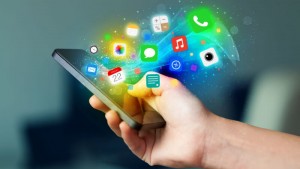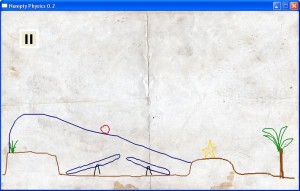The internet has been around since 1974 and now it is everywhere. There is  not a single thing that cannot be done without an app, found on a search engine or shared on social media. Although this means that the way we teach has been revolutionised, there are so many free and easily accessible resources available online, this connects teachers and helps globalise the ideas which work in the classroom.
not a single thing that cannot be done without an app, found on a search engine or shared on social media. Although this means that the way we teach has been revolutionised, there are so many free and easily accessible resources available online, this connects teachers and helps globalise the ideas which work in the classroom.
The lecture started by asking us to think of ways that we use the internet and how it impacts our lives. Whilst I was on placement the children in Year 1 had already begun using the internet, starting with search engines and using apps on the ipads. This helped to show them the endless possibilities and gave them skills which they will be using for the rest of their lives. It is incredibly important to teach children how to stay safe and vigilant whilst using the internet, they focused on this for a small section of each lesson. The children were reminded of their schools rules and policies on the internet and how they should be using it.
 Although 46% of the worlds population now uses the internet, many people still don’t know what it actually is. The internet is a distributed packet-switched network, it is made up from a series of independent networks, which are controlled by the network providers, although they ensure that they are all linked together. This is in contrast to the World Wide Web which is a single server host sending small packages of code between the computers, once the computer receives this using the browser they can change this code into documents, images and sounds. Although the web is just one section of the internet, for example it is not used for emails, IMs or FTP.
Although 46% of the worlds population now uses the internet, many people still don’t know what it actually is. The internet is a distributed packet-switched network, it is made up from a series of independent networks, which are controlled by the network providers, although they ensure that they are all linked together. This is in contrast to the World Wide Web which is a single server host sending small packages of code between the computers, once the computer receives this using the browser they can change this code into documents, images and sounds. Although the web is just one section of the internet, for example it is not used for emails, IMs or FTP.
It has been argued by the OECD that using computers and the internet has no effect on children’s progression and does not improve their grades. The OECD has reviewed and compared 70 different countries and the impact that they have had on international tests, although there was ‘no noticeable improvement’. They then went on to state that: ‘Students who use computers frequently got worse results’. Despite this the National Curriculum (DofE, 2013) still states that children should be taught to ‘understand computer networks including the internet; how they can provide multiple services, such as the world wide web’ and ‘select, use and combine a variety of software (including internet services) on a range of digital devices to design and create a range of programs, systems and content that accomplishes given goals.’ Computers cannot be banished from schools for the sake of receiving higher grades, children need to be prepared for what they will face in later life, they will not be able to escape them. Zaitoun (2002, cited in Aloraini, 2012) states that multimedia platforms and computers helps to make children’s experiences more dynamic and interesting, compared to those of just text printed into a book. Alraini (2005, cited in Aloraini, 2012) also raises the point that using computers children are able to see video clips, maps and presentations that help to bring the information closer to a reality. They are able to view other cultures vicariously though the internet, which is something which is promoted throughout schools. I believe the internet can be a valuable tool, if it used correctly. Children do not learn though making endless Powerpoint presentations or information pages, they need tasks which will grip their imagination and make them ask questions, which they can answer through using the internet.
Finally, we looked at the difference between different learning theories and how they influence the programs that are designed in that style.
- Behaviorism– An example of this is Skoolbo, this program offers rewards for questions which have been answered correctly. According to Hartley and Davies (1978) learning becomes easier when they follow the active process of learning, and in this case it is presented within the activities of the program. Since everything is in a logical order it relaxes the children and encourages them to take chances. But more importantly children receive instant feedback which enables them to learn from their mistakes. Feedback helps children to understand where they have gone wrong and how they can change their work to improve, but it also encourages an important skill since they will have to receive feedback in all areas of their lives.
- Constructivism- An example of this is Numpty Physics, this program combines the knowledge that the learner has and their experiences. This theory states that learning is always constructed and as children interpret the social, cultural and physical environments around them they begin to solve problems (Dick, Carey & Carey, 2004). Numpty Physics allows children to use what they know and a trial and error approach to the problems to learn how to achieve a goal. This helps children to understand that it is okay to get things wrong and experiment with different ideas and approaches, since not everyone thinks the same way. The children are able to understand and appreciate each others ideas, whilst learning from them.
- Cognitivism- An example of this is Learn With Homer, this approach states that children should be given control of their learning. This allows them to be fully involved and interested into what they are learning, although they should be in a rich environment to further support this. Learn with Homer allows the children to choose what they want to do and which area they want to learn from, therefore each child’s path is different but they all reach the common goal at their own pace. I believe this is incredibly important as children need to learn at their own pace, and this program allows children to do so.

Hi Sian
This is a great first post. Good use of embedded images and hyperlinks to add interest. I encourage you to explore case studies as they provide a great link between theory and practice. What were your thoughts on Connectivism and Constructionism?
Connectivism, for example Wikipedia, has many advantages such as being able to advance and adapt the knowledge that is already known. Although since people are able to edit things such as wikipedia, there is a chance that the information that they have can be incorrect or bias. Although constuctionism allows children to approach their work with a trial and error approach. Using Scratch as an example, the children are able to make as many mistakes as they can which will help their learning. It’s about the learning through the creation of the product, rather than just working for a final product.
An really informative blog detailing the main learning theory approaches and interesting practical examples of each. It is surprising that considering the vast number of people who use the internet and the web, many do not fully understand how it actually works.
Who doesn’t love summer? It is the most fun part of the year but we need to make the most out of it.
Parenting: https://allroundclub.com/blog/creative-summer-learning-ideas/